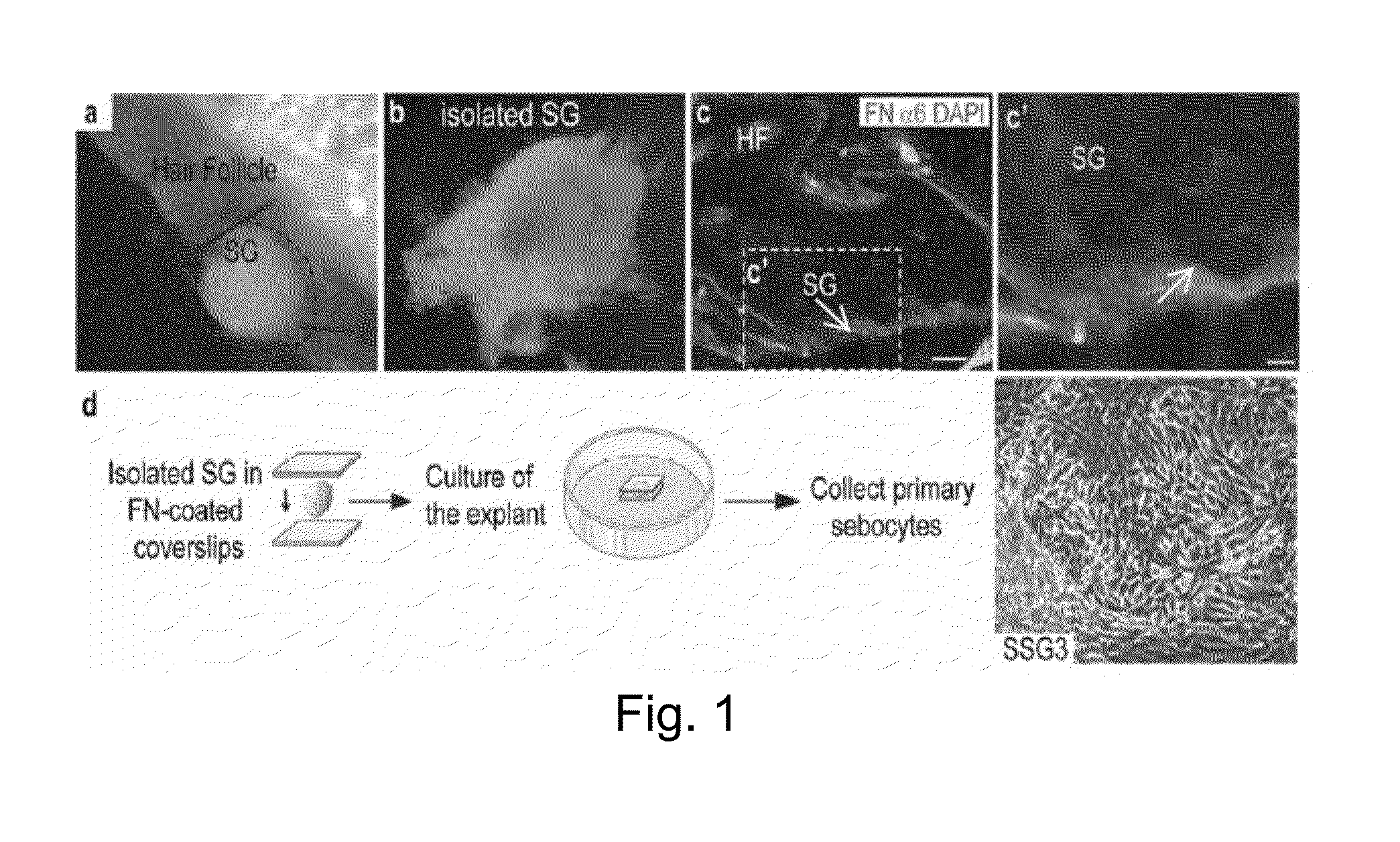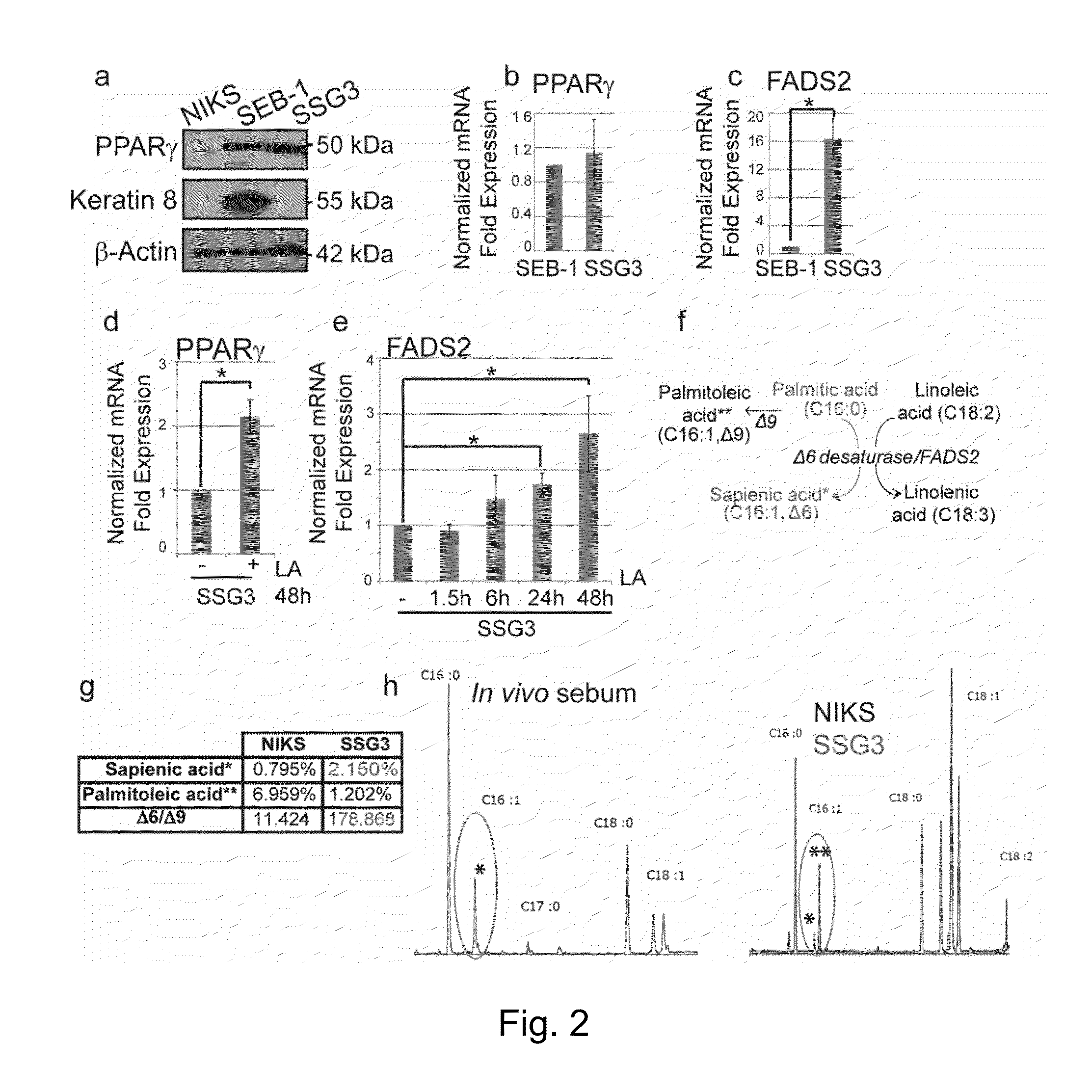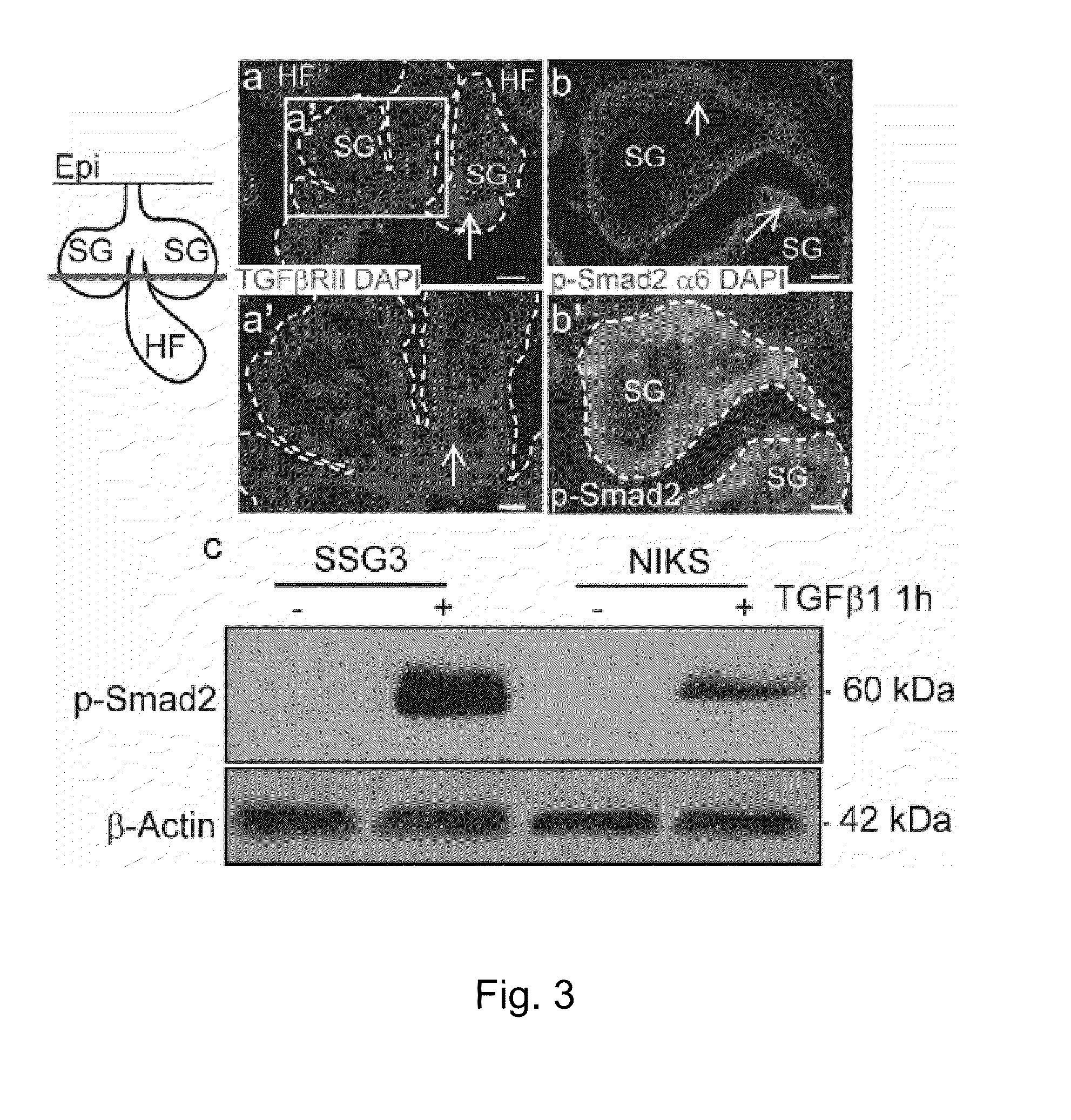Sebocyte cell culturing and methods of use
a technology of sebocyte cells and culturing methods, applied in cell culture active agents, artificial cell constructs, instruments, etc., can solve the problems of limited use of cellular transformation for analyzing the cell cycle and differentiation regulation of sebocytes, increased dryness and fragility of the skin, and inability to successfully culturing human primary sebocytes
- Summary
- Abstract
- Description
- Claims
- Application Information
AI Technical Summary
Benefits of technology
Problems solved by technology
Method used
Image
Examples
example 1
Method of Culturing Sebocyte Cells
[0047]Sebaceous gland populations were generated from human scalp (SSG3), face, and breast from both male and female donors ranging in age from 9 months to 12 years old. The skin samples were collected as a surgical waste with information provided regarding the age and sex of the donors with Institutional Review Board (IRB) approval at Cincinnati Children's Hospital Medical Center.
[0048]After cutting the skin samples in small pieces, the sample was treated with dispase 1× (2 mg / ml in PBS1×, Gibco / Invitrogen cat#17105-04; Carlsbad, Calif.) overnight at 4° C. at before dissection. The dispase is used to separate epidermis from dermis, and avoid epidermal cell contamination.
[0049]After treating the skin with dispase 1× (FIG. 1), intact sebaceous glands were isolated with microsurgical instruments under a dissecting microscope. The hair shaft and a small amount of tissue were retained with the sebaceous gland to preserve the microenvironment around the ...
example 2
Characterization of Cultured Sebocyte Cells
Methods
Western Blotting
[0054]Proteins were separated by electrophoresis on 10-12% acrylamide gels, transferred to nitrocellulose membranes and subjected to immunoblotting. Membranes were blocked for one hour with 5% non-fat milk or 5% BSA in PBS containing 0.1% Tween-20. Primary antibodies were generally used at a concentration of 1 / 1,000 and HRP-coupled secondary antibodies were used at 1 / 2,000 in 5% non-fat milk. Immunoblots were developed using standard ECL (Amersham, Pittsburgh, Pa.) and Luminata TM crescendo and classico (Millipore). Two-color immunoblot detection was performed using LI-COR Odyssey CLx (LI-COR Biosciences, Lincoln, Nebr.). Membranes were blocked in Odyssey blocking buffer (LI-COR) and secondary antibodies conjugated to IRDye 680LT and 800CW were used (1 / 10,000; LI-COR). Protein levels were quantified using the Odyssey Infrared Imaging System (LI-COR).
[0055]To ablate TGFβRII in SSG3 cells, shRNA vect...
example 3
Screening of Compounds
[0094]The primary sebocytes will be used to test compounds known to be inhibitors or activators of lipogenesis, and identify test compounds that inhibit or activate lipogenesis, or change or alter the effects of an inhibitor or activator of lipogenesis.
[0095]Known inhibitors or activators of lipogenesis:
Androgen: sebum production is under androgen control, and an abnormal response of the pilosebaceous unit to androgens appears to be implicated in the pathogenesis of acne
5α-reductase inhibitor (use to treat androgenic alopecia): reduce lipogenesis
5α-DHT (di-hydrotestosterone) (androgen stimulates the activity of sebaceous gland in vivo): increase proliferation, increase lipogenesis.
DHEA (5-Dehydroepiandrosterone)(It is the major secretory steroidal product of the adrenal gland, acts on the androgen receptor, androgenic influence on sebaceous gland activity): increase lipogenesis
Cyproteron acetate (anti-androgen): decrease lipogenesis
Estrogens: Estradiol: decreas...
PUM
| Property | Measurement | Unit |
|---|---|---|
| Length | aaaaa | aaaaa |
Abstract
Description
Claims
Application Information
 Login to View More
Login to View More - R&D
- Intellectual Property
- Life Sciences
- Materials
- Tech Scout
- Unparalleled Data Quality
- Higher Quality Content
- 60% Fewer Hallucinations
Browse by: Latest US Patents, China's latest patents, Technical Efficacy Thesaurus, Application Domain, Technology Topic, Popular Technical Reports.
© 2025 PatSnap. All rights reserved.Legal|Privacy policy|Modern Slavery Act Transparency Statement|Sitemap|About US| Contact US: help@patsnap.com



